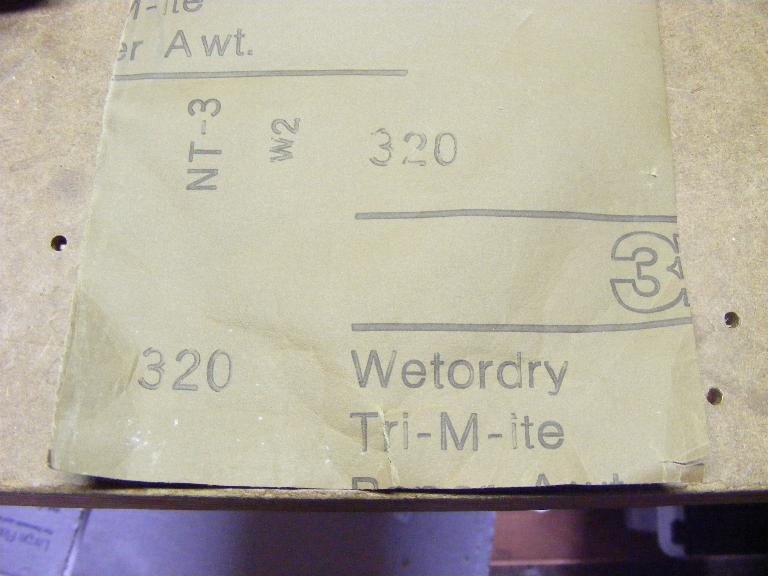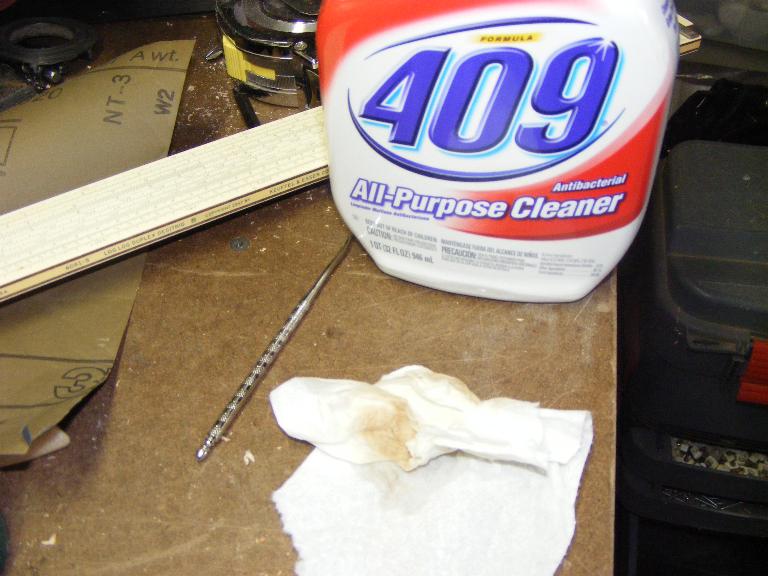
Slide Rule Cleaning Demonstration
If the problem is general dirt which is the dark looking grime that comes from finger oils being deposited and collecting dirt the simplest method is to use a rag or paper towel lightly wetted with 409 general purpose cleaner. Care should be taken not to get the wood parts of the frame wet. If any wood does get wet wipe it off immediately.
In the picture below you can see the paper towel with some rust stains that was removed from the rule being used for demonstration.

The rule that was chosen for this demonstration is a 20" K&E 4081-5 that was stored in one of K&Es synthetic leather green cases. Apparently under certain storage conditions the chemistry of the green case and the metal parts on the rule are not compatible. The cursor frames were corroded so bad that they fell apart. I salvaged the cursor glass and the end blocks of the cursor and used these parts to rebuild the cursor on another 20" rule that had rotten cursor blocks.The rest of this rule had rust marks and some type of green corrosion marks on the slide where it was under the end frames. This green corrosion actually was built up quite a bit.
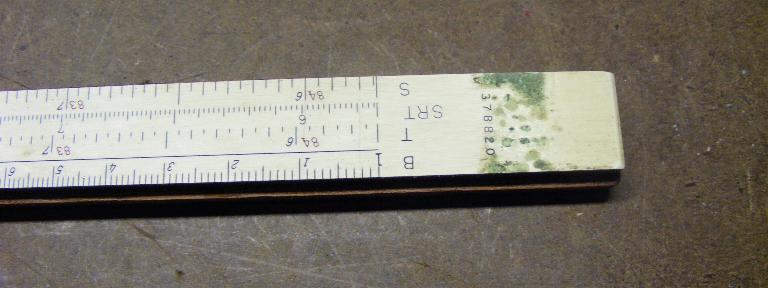
The first step was to scrape the large parts of the corrosion with the end of a nut pick.
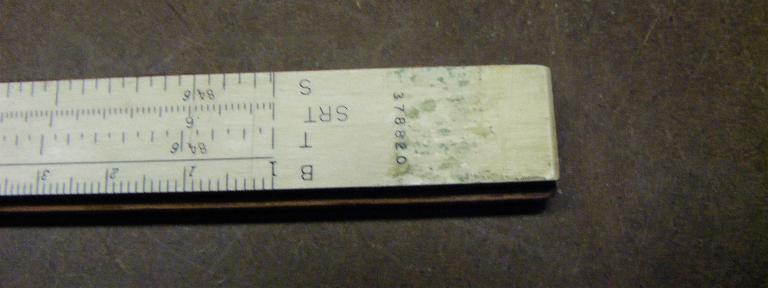
The second step was to use a 320 grit wet-or-dry sand paper in a linear motion along the length of the rule. As you can see this was very effective.
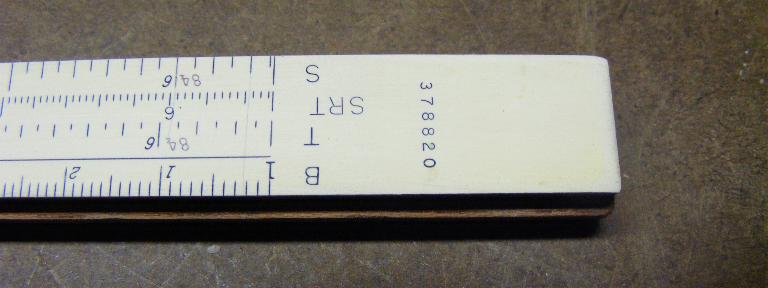
This next demonstration shows the same technique is applied to some rust spots on the body where the cursor was.
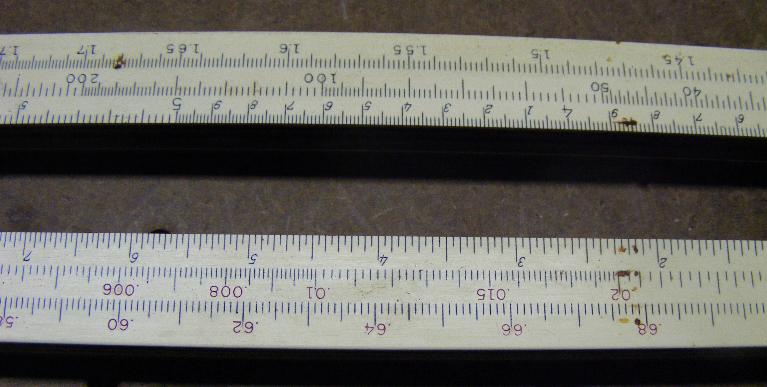
After sanding.
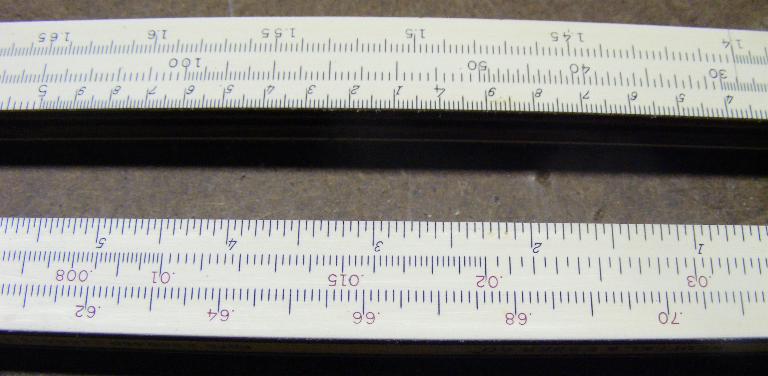
More rust spots.
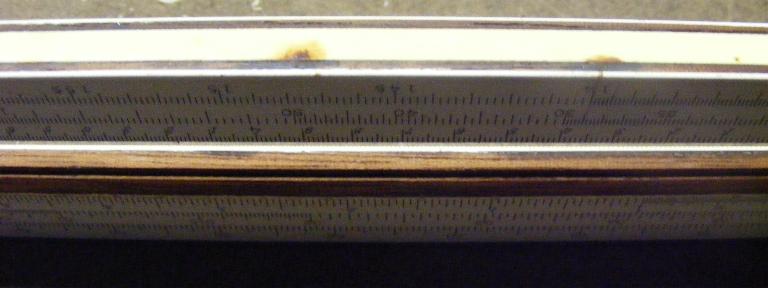
This particular spot is apparently deep into the celluloid. However the sanding did make it look much better.

The following two pictures shows the slide placed back in the rule to observe the contrast of before and after the sanding process.
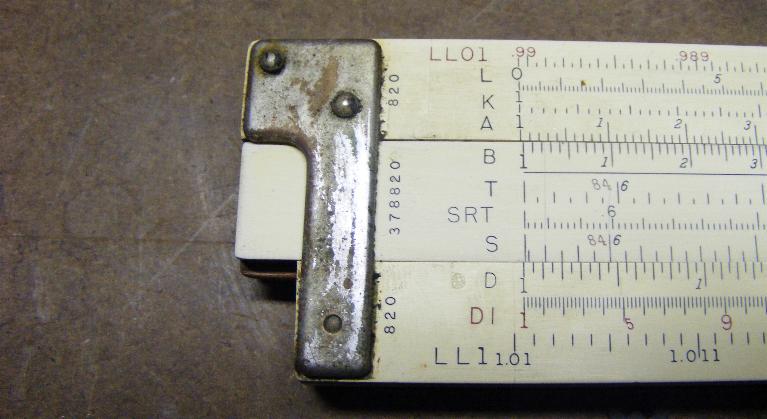
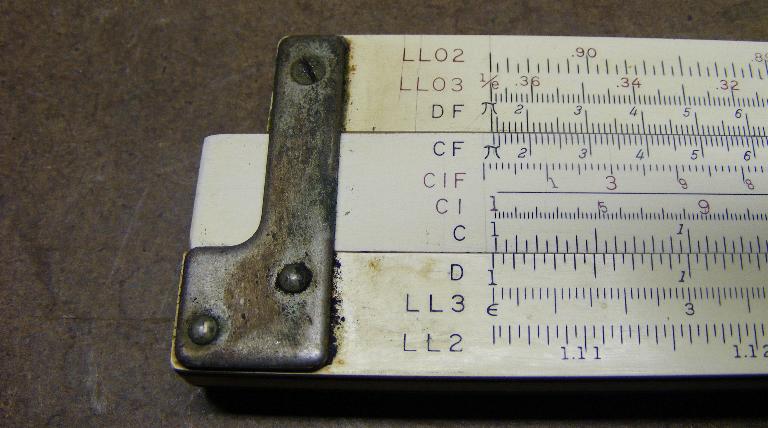
The particular sand paper used in this demonstration. I did not back it up with anything but my finger. Care was taken that the movement was straight with the length of the rule. No circular motions.
